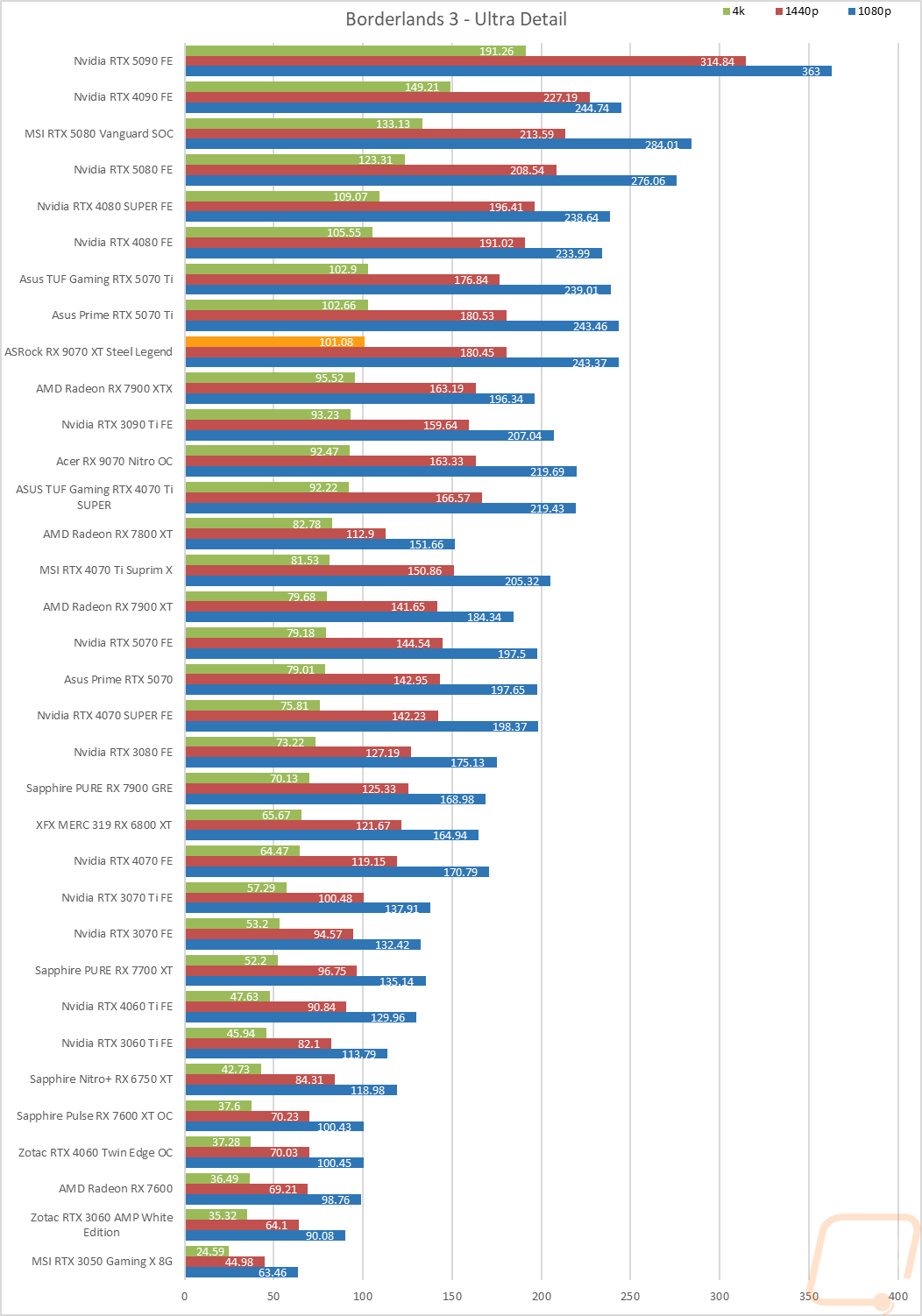In-Game Benchmarks
Now we finally get into the in game performance and that is the main reason people pick up a new video card. To test things out I ran through our new benchmark suite that tests 8 games at three different resolutions (1080p, 1440p, and 4k). Most of the games tested have been run at the highest detail setting and a mid-range detail setting to get a look at how turning things up hurts performance and to give an idea of whether turning detail down from max will be beneficial for frame rates. Cyberpunk 2077 is also tested with Super Sampling (DLSS/FSR/XeSS). In total, each video card is tested 60 times and that makes for a huge mess of results when you put them all together. To help with that I like to start with these overall playability graphs that take all of the results and give an easier-to-read result. I have one for each of the three resolutions and each is broken up into four FPS ranges. Under 30 FPS is considered unplayable, over 30 is playable but not ideal, over 60 is the sweet spot, over 120 FPS is for high refresh rate monitors, and 240 helps show the performance ideal for the latest higher refresh displays.
So how did the RX 9070 XT Steel Legend do? At 1080p the RX 9070 XT Steel Legend had every result over 60 FPS, all but one over 120 FPS, and 13 out of the 18 were over 240 FPS. At 1440p everything was once again all over 60 FPS, 16 were over 120 FPS, and 6 were over 240 FPS. Then at 4k performance does start to drop but it is still playable with one result under 60 FPS, 7 were between 60-119 FPS, 9 were between 120 and 239 FPS, and there was one over 240 FPS.



To get a better look at some of the cards that are the closest competition to the RX 9070 XT Steel Legend I also have a range of the averaged results across all three resolutions. They are sorted in order by the 1440p result which is important to note because the RX 9070 XT Steel Legend outperformed the RX 7900 XTX at 1080p and 1440p but is 11 FPS behind it at 4k. In the end, it sits behind the RTX 5070 Ti but ahead of the RTX 4080 SUPER from Nvidia and depending on the resolution behind or ahead of the 7900 XTX. There is one thing to note about these results, they do include our Cyberpunk 2077 tests which include a set of tests that include FSR or DLSS at the highest SS setting available. For the 50 Series Nvidia cards that does mean DLSS 4 where AMD currently has FSR 3.1 available but not FSR 4. I hope that we see it included soon to get a better direct comparison. Taking those tests out the RX 9070 XT Steel Legend averaged 248 at 1080p, 203.6 at 1440p, and 119.7 at 4k. The 5070 Ti was still ahead but lower at 264.3 at 1080p, 216.6 at 1440p, and 130.8 at 4k.

Of course, I have all of the actual in game results as well for anyone who wants to sort through the wall of graphs below.














Another new addition to my testing was a few additional tests using Cyberpunk 2077. This is one of only a few games that support most of the tech from all three of the GPU companies. So I did tests at medium and ultra detail while having Super Sampling on for all of the cards. Using whatever the latest and greatest is supported. In this case, I tested with FSR 3.1. Just a note here, the AMD cards only allowed FSR when running windowed mode whereas Nvidia only performed well in fullscreen mode. This comparison does a great job of showing you the kind of performance increase that you can see in actual games when using FSR, the RX 9070 XT Steel Legend went from 60.52 at 4k ultra detail up to 204.39, a 237% increase.





